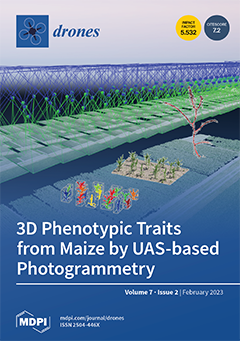Open AccessEditor’s ChoiceReview
Configurations and Applications of Multi-Agent Hybrid Drone/Unmanned Ground Vehicle for Underground Environments: A Review
by
Chris Dinelli, John Racette, Mario Escarcega, Simon Lotero, Jeffrey Gordon, James Montoya, Chase Dunaway, Vasileios Androulakis, Hassan Khaniani, Sihua Shao, Pedram Roghanchi and Mostafa Hassanalian
Cited by 29 | Viewed by 8764
Abstract
Subterranean openings, including mines, present a unique and challenging environment for robots and autonomous exploration systems. Autonomous robots that are created today will be deployed in harsh and unexplored landscapes that humanity is increasingly encountering in its scientific and technological endeavors. Terrestrial and
[...] Read more.
Subterranean openings, including mines, present a unique and challenging environment for robots and autonomous exploration systems. Autonomous robots that are created today will be deployed in harsh and unexplored landscapes that humanity is increasingly encountering in its scientific and technological endeavors. Terrestrial and extraterrestrial environments pose significant challenges for both humans and robots: they are inhospitable and inaccessible to humans due to a lack of space or oxygen, poor or no illumination, unpredictable terrain, a GPS-denied environment, and a lack of satellite imagery or mapping information of any type. Underground mines provide a good physical simulation for these types of environments, and thus, can be useful for testing and developing highly sought-after autonomous navigation frameworks for autonomous agents. This review presents a collective study of robotic systems, both of individual and hybrid types, intended for deployment in such environments. The prevalent configurations, practices for their construction and the hardware equipment of existing multi-agent hybrid robotic systems will be discussed. It aims to provide a supplementary tool for defining the state of the art of coupled Unmanned Ground Vehicle (UGV)–Unmanned Aerial Vehicle (UAV) systems implemented for underground exploration and navigation purposes, as well as to provide some suggestions for multi-agent robotic system solutions, and ultimately, to support the development of a semi-autonomous hybrid UGV–UAV system to assist with mine emergency responses.
Full article
►▼
Show Figures





